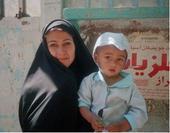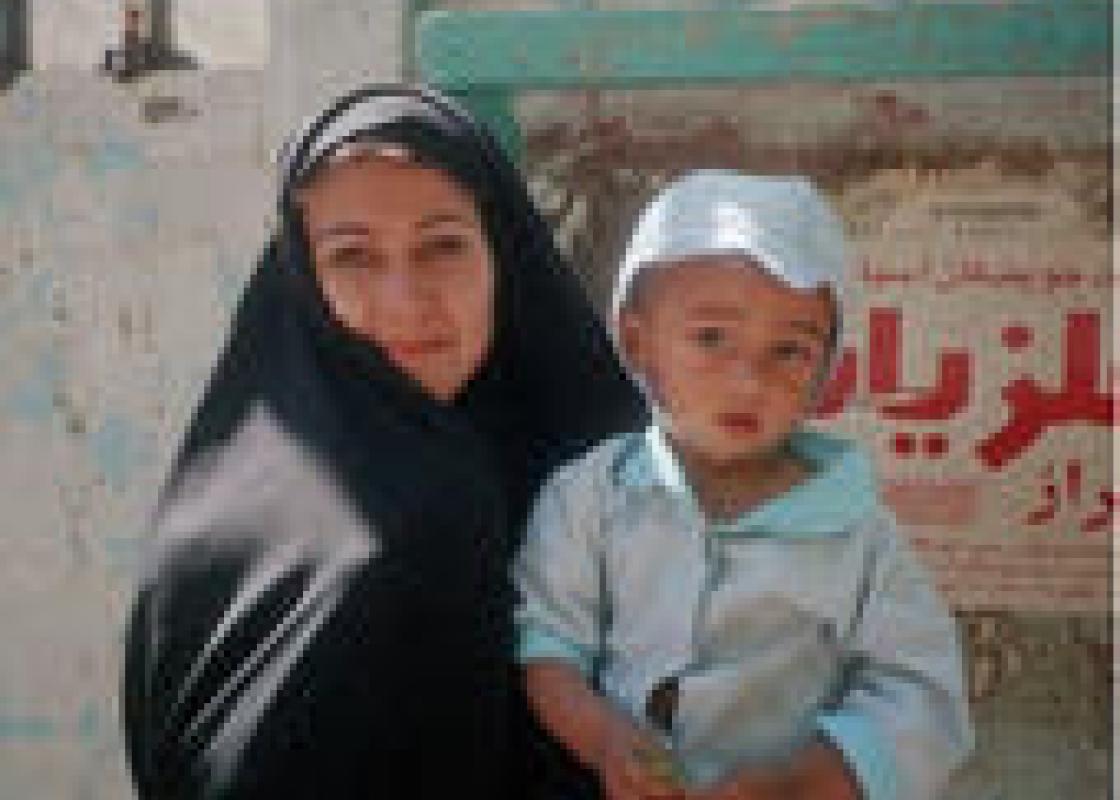
According to official Iranian statistics, 10% of the country’s households have female providers, but sociologist Nahid Motie claims that the real number is closer to 15%. The authorities only count widows and divorced women in their statistics. While Motie's research shows that there are many women who are heads of their households of other reasons, because the husband is in jail, is a drug addict, old, ill or disabled. Or because the husband has left the family to find work in the city or abroad, or has fled Iran of political reasons. Motie’s study also shows that many women providers in reality lives together with other family members, so that they are not the actual heads of their households. – It is necessary to show the diversity of families with women providers in the official statistics, says Motie.
Lack of recognition
Nahid Motie tells that female-headed households are neither recognized in the laws of the country or by society at large. And this lack of recognition she thinks is the primary cause of these families’ difficulties. The dominating patriarchal ideology in Iran looks, like many other countries, upon the husband as the provider and the head of the family. The men are responsible for the women’s economic and social welfare. When a man does not protect his woman, or when he is absent, she is looked upon as ”needy”. Motie thinks that this term implies that a woman without a male provider is not looked upon as an adult individual with her own identity. Women are therefore not believed to be able to control their own destiny.
Nahid Motie has done research both on poor and middle class female-headed households. Both the poor and the middle class women told that they sacrificed themselves for their children. Many of them reported economic, practical and mental problems, but that their children came first.
Poor families
For more than half of the poor women the cause of headship was their husbands’ deaths, while divorce was the reason for 18%. The others stated the reason for headship that their husband was drug addict, refugee, in jail or disabled. In families where the husbands were not totally absent, many of women reported great problems with bad treatment from their ex-husbands, like violence or threats of violence. Furthermore women looked upon kinship and the family network as important, especially mother and sisters.
For the poor women charity organizations are important for economic support, while there was little help to get from the government. The support that according to the law of 1992 is supposed to be given to needy women and children only covers 5-10% of the total expenses of a family of five persons. More than half of the poor women lived together with their own parents or other family members in their own family, while one quarter lived with husband’s family. This means that women without husbands mainly are supported by their own family. So in spite of laws and traditions that prescribe that married women belong to the husband’s family, it is the women’s families that support them when poverty prevails.
One third of the poor women worked, but because there are no good and cheap day care systems, working at home was the most typical, like laundry and sewing. Some of them also brought their young children to work. 70% of the women were not working and lived on support from the government or family.
The poor women in Motie’s study had low reading and writing skills, but this was not true of their children. Almost all of the children that participated in the study went to school, and none of them were school dropouts.
Middle class families
Motie also interviewed middle class women who headed their households. These women have education and are often working. Their children are in day care centers or other arrangements, and the women more often have their own house where they live alone with the children. But the middle class women also report problems when it comes to being a female head of the household. They are worried about the future of their children and the economic duties. And they meet prejudice. One woman tells that for her the most serious problem is the bad attitude of the neighbor and the negative attitudes of the officials. – They give my children a sense of being orphans, she says. But Motie also found examples of local communities that supported female heads of households, and helped them practically and economically.
Divorce and custody of children
The divorce rate is increasing in Iran, and especially in Tehran where one in five marriages end in divorce. Motie explains that in Iran the mother can only have custody of girls under the age of 7 and boys under the age of 2 years old. After this age the children are supposed to be transferred to the father or father’s family. But the women Motie interviewed had nevertheless gotten the custody of their children, also children that were above the age limit for transfer to father. Another Iranian study shows that half of divorced women have at least one child, and that half of these have the custody of their children.
Motie claims that there now is a certain acceptance for the mother to have daily care of the children after divorce, that it is being looked upon as important and morally correct to let the children keep the mothers care also when the family breaks up. She thinks that the changes come from the parents of the younger generation, who have access to foreign media through satellite-TV and Internet. But even if mother are allowed to keep the children in these families, Motie underlines that according to Islamic law it is the father or father’s family who are the formal guardians of the children, and who make the important decisions in the children’s lives. Something which makes the mother’s role difficult, she is allowed to give care, but not decide.
In Motie’s study both poor and middle class women report that they are afraid to lose their children. Some of the middle class women had unofficial agreements about custody of the children. None had official agreements.
A divorced woman is allowed to remarry in Iran, but in that case she risks loosing the children. Father or father’s family can demand to have the children – whatever age – when the mother remarries. She also risks that the new husband might not want to provide for the children or that he behaves badly towards them. According to Islam a good man should provide for a woman’s children, but in reality this is not often the case with children from a previous marriage.
Not victims!
- It is wrong to treat women that head households as victims, says Motie. She interviewed a high school teacher who is married, but the husband has left the family. The mother is not officially recognized as the head of the household, even if the husband neither contributes economically or with parenting. To manage the expenses of the family, she started a second job as a taxi driver with her own car in the weekends and evenings. Taxi driving is not looked upon as a woman’s occupation in Iran, and this woman was probably the first one to start. It was a fight against many odds. The principal of her school summoned her and threatened her with dismissal. She fought back and won. "I stood against these problems and tried not to become helpless", she said. "I continued to be in charge of my family". She adds that if the Ministry of Education had given teachers a sufficient salary, she would not need a second job.
- It is important not to brand female households as "victims" or "social problems", says Motie. - It is obvious that they meet many problems, but to put all emphasis on the difficulties is both practically and ideologically misleading. Many changes are needed in the laws and in the government’s policy for female-headed households. But in the meantime many of these women have taken control over their own lives and work hard to surpass boundaries and limitations.
Nahid Motie is associate professor in sociology at the Open University in Tehran. She is also a member of the NGO Independent Researchers on Women’s Issues. This network aims to gather feminist researchers from different fields of study to exchange research experiences and learn from each other. One activity of the NGO has been to publish the report: Beijing+5: Iranian Women Researchers' Independent Study.
Nina Kristiansen is the former director of KILDEN, Norwegian Information and Documentation Centre for Women's Studies and Gender Research. She stayed for five months in Iran in the spring of 2003.
